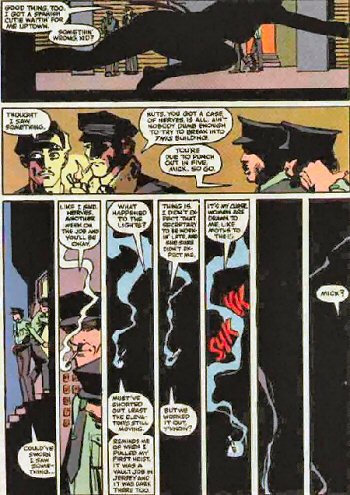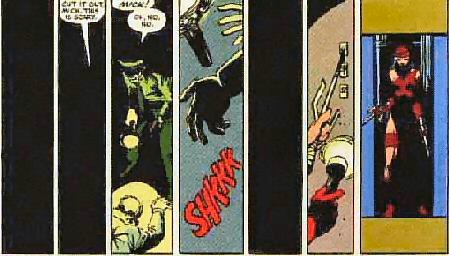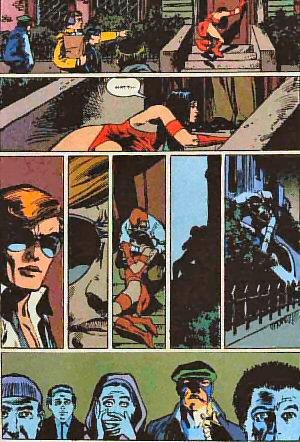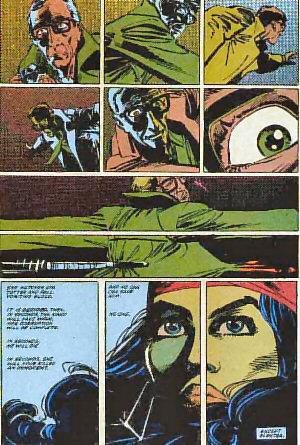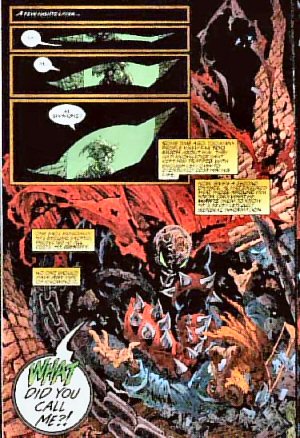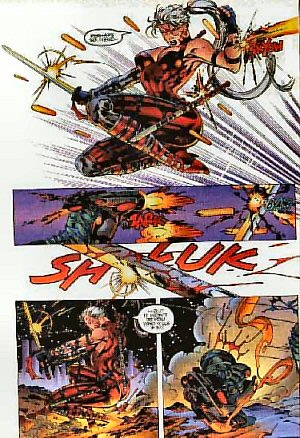
|
Leave the lighting to the DP? No way. An important element of the story is the mood. Just as you would verbally describe a scene as being haunting or somber, you can also communicate it visually by using diverse sources of light.
This creates an immediate reaction from the audience as they know "something" is going to happen.
Our next shot introduces us to the two guards.
The lighting up of a cigarette may seem insignificant for the moment but what's happening here is called foreshadowing.
Our two guards entering the elevator. Guard 1 is oblivious to his surroundings but Guard 2 isn't so relaxed. He thinks he saw something; appears nervous.
Our chatty guard continues to talk up a storm then...
Now, the audience's imagination kicks in.
Watch as our (once insignificant) cigarette and it's trail of smoke "tells" the story.
Seems our chatty Guard 1 has developed a serious case of laryngitis
... Perhaps something even deadlier?
Then... a new source of light reveals our chatty guard has had his own lights taken out.
(Excuse the pun.)
Guard 2 then "joins" his partner.
Flashlight has a new owner.
Beam discloses the murder weapon.
Finally, our silhouette reveals herself.
As in screenwriting, where less (dialogue) is more, Frank captured this concept in the pages of Daredevil. Note the next two examples from the pages of Daredevil 181 (left) and Daredevil 179 (right).
Today, comic writers and artists tackle the task of storyteller in a variety of ways. No longer is the simple panel design the norm. Comic creators, such as Todd McFarlane of Spawn fame and Jim Lee of Wildstorm Productions, prefer to continually devise new and exciting formats to tell their tale.
Here's looking forward to a day when comic books will bask in the same spotlight that the Motion Picture Industry enjoys and future Hollywood filmmakers will acknowledge that their mentors came from the pages of pulp. Pulp Fiction. It's not just a Tarantino film.
theater 1 |
theater 2 |
theater 3 |
theater 4 |
theater 5 |
theater 6 |
theater 7 |
theater 8 |
theater 9 |
theater 10
|
